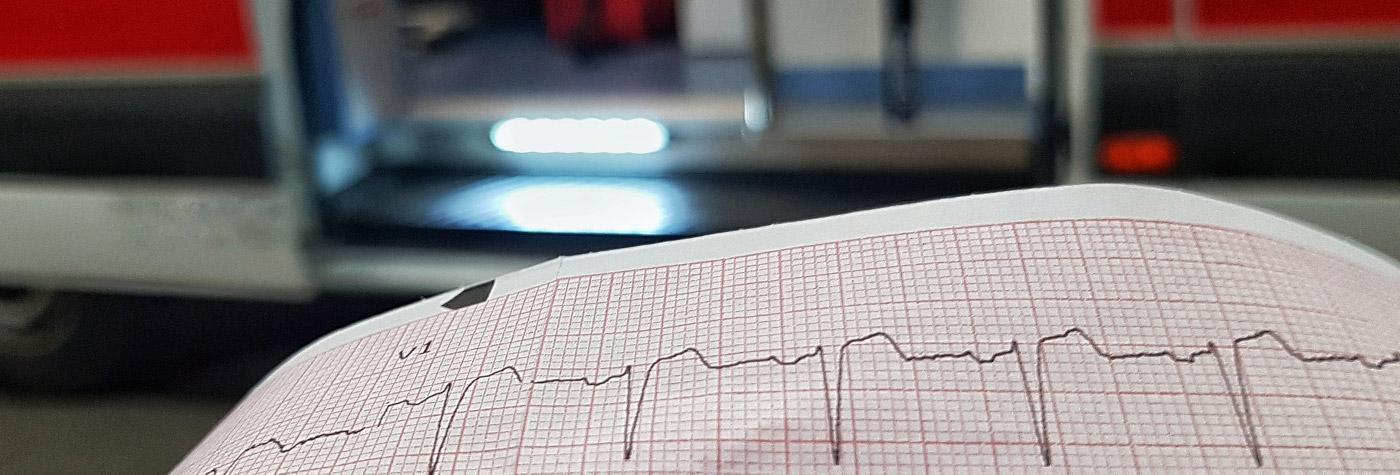Accelerator II
The UK Gill Heart & Vascular Institute has taken a lead role regionally in a national study that has shown when EMS and hospitals use a standardized procedure, they can reduce the time it takes to get a heart attack patient the necessary and emergent treatment.
“With every minute that passes, more heart muscle gets damaged, and you can’t get it back,” says Gill’s Clinical Chief of Cardiology, Dr. Khaled Ziada, MD, FACC, FSCAI, who is the Central and Eastern Kentucky region’s principal investigator for the study Accelorator-2. “And the longer time passes, the higher the risk of death.”
The best treatment for heart attack patients is to open the blocked artery causing the heart attack using a balloon angioplasty procedure and support the opened blockage with a metallic stent within 90 minutes of first contact between the patient and the emergency responders. The study’s objective was reach that goal in at least 75 percent of heart attack patients Hospitals were working on reducing times independently, says Dr. Ziada, but “it wasn’t organized and it wasn’t standardized enough,” and EMS protocol depended on where the patient asked to be taken.
Under the umbrella of the American Heart Association, Dr. Ziada and his team collaborated with providers from13 other medical facilities throughout Central and Eastern Kentucky, which leads the nation in deaths due to heart disease. Cardiologists from all hospitals involved agreed on a protocol adapted from the American Heart Association guidelines.
“It was not difficult because we all knew there is good medical research to say, ‘this is the right thing to do’” he says. Dr. Ziada says they also provided ECG training for paramedics in the region. “We asked EMS to make the diagnosis using the ECG, let us know they were coming so we get the team ready, and transport the patient as quickly as possible whether by air or by ground” he says. “We gave them Plan A and Plan B.”
Plan A is get to the nearest hospital that offers emergency angioplasty for heart attacks. Plan B, if they are too far, is to go to the nearest hospital for a clot-busting medicine or to be set up for transfer.
“We created an algorithm that shows which is better to use at which time,” says Dr. Ziada. “They had it in their hands, and we empowered them to just implement the plan.”
The next step, says Dr. Ziada, was to reduce “dwell time,” or the time it takes from arrival at the hospital to undergoing the angioplasty, by bypassing the emergency department and delivering patients directly to the catheterization lab.
Each participating hospital has a STEMI coordinator who collects the data, gives performance feedback to EMS, and sends the information to a national database. “With the data, we can show them, and ourselves, where the weaknesses are,” says Dr. Ziada. “Shorter times indicate that your process is working better.”
Gill provides feedback to EMS, emergency departments and transferring hospitals, in addition to transmitting data to the national databases and receiving benchmarking and feedback reports.
Nationally, at the beginning of the project, he says 67 percent of the patients met the first contact-to-balloon goal; at the end, it was 74 percent. The study demonstrated that the rate of death in the hospital was reduced by the reduction in time it takes to activate the catheterization laboratory.
“Regionally, we were achieving the goal 64 percent of the time and were able to improve to 77 percent,” he says. “Our region was able to exceed the national goal.”
Learn more about our Cardiac Catheterization and Interventions ProgramSee more stories from 2018 State of the Heart

